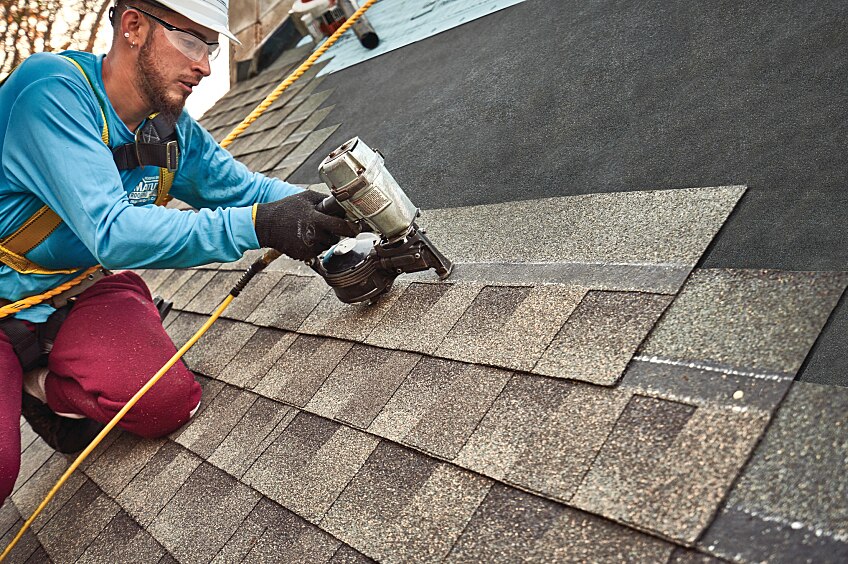As Erasmo "Mitos" Fuentes — GAF CARE Team Training Lead and highly respected "Maestro" of the roofing world — will warn rookies, errors during installation can have consequences later on in the life of the roofing system. Beaucoup d'entre elles sont mineures, comme les petites fuites. D'autres, en revanche, peuvent être beaucoup plus graves, comme des fissures importantes (et potentiellement désastreuses).
The good news is that precautionary techniques and practices — such as watching out for potential trouble spots, working with high-quality materials, and focusing on excellent workmanship — can prevent such issues from the outset. Here are some more of the most common roofing errors from Erasmo's list that could lead to issues down the line.
1. Missing Ventilation in the Attic
When laying down roof shingles, it's vital to make sure air can escape from attics and ceilings, which need the proper level of humidity and airflow. Inadequate attic ventilation can cause moisture buildup and mold, weakening the shingle material. Missing ventilation can then cause structural issues and cut the life of the roof's materials short.
Not only can this ruin the insulation, but it may also cause energy bills to spike. Typically, attics require one square foot of ventilation for every three-hundred square feet of attic space, but the roof design and slope determine the exact calculation.
2. Incorrectly Installing Hip and Ridge Caps
In some cases, problems stem not from technique but from using the wrong materials for hip and ridge caps. Roofers may attempt to cut an ordinary shingle into three pieces and use that - however, many of today's thicker shingles are not designed to be ridge caps because they don't lie flat. Ultimately, some could crack or break when they're bent over the ridges.
GAF Hip and Ridge Cap Shingles come pre-perforated to help roofers achieve efficient installation of materials protecting the hips and ridges. And because they match GAF shingles, they will also create a better overall aesthetic.
3. Using Incorrect Metal Flashing
Customers who take pride in their homes obviously want their roofs to look good. So, using just one type and finish of flashing — whether or not it matches the walls, chimney caps, skylights, and dormers on their new roof — may not quite cut it.
For the best results, color-match the roofing elements and make sure they're compatible with the adjoining building materials to prevent corrosion. It's also crucial to seal flashings properly to help prevent leaks. Also, never omit flashing where it's previously been used (or reuse old flashing that has become corroded).
4. Choosing the Incorrect Valley
Roof valleys (the areas where two roof planes meet) may be subjected to more rain, snow, ice, and debris than any other part of the roof. With several different installation techniques commonly used by roofing contractors, it is important to confirm that your roofer chooses the method best suited for your property, and for the roofing materials being installed.
5. Lack of Maintenance
To keep roofing systems in tip-top shape throughout their lifetimes, it's advisable to schedule regular inspections. During an inspection, contractors will make sure leaves don't accumulate, clean the gutters, and check the roof sealant along the flashing and walls — maintenance tasks that prolong the life of the roof and its materials.
An easy way to prevent some of the most common roofing errors is by harnessing available resources, such as following installation instructions and upgrading your roofing knowledge via training seminars, lectures, and webinars — like those hosted by GAF CARE (Center for the Advancement of Roofing Excellence) trainers. Also: consult your shingle manufacturer representative for help whenever you need it. The more information you have, the better results your customers can expect.

